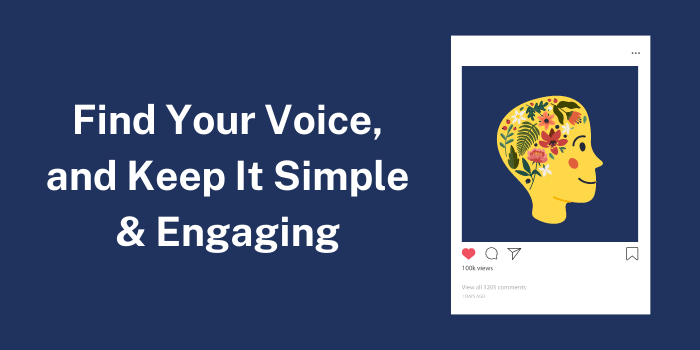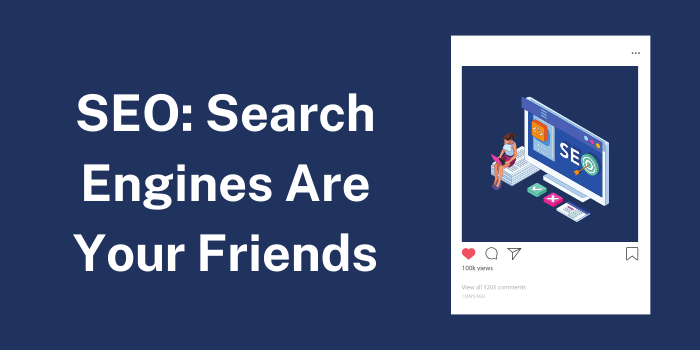- Blog Home
- Industries
- Jubilee Heutmaker
- Top Social Media Strategies For Your Government And Politics Site
Top Social Media Strategies for Your Government and Politics Site

Marketing isn’t just about selling, it’s also about spreading public awareness, whether it involves a social situation or injustice, a current event, a public health concern, or a community need. That's why marketing for government and political sites can be tricky because you need to make it appealing enough to be engaging, but compelling enough so that it resonates with your audience on a relevant, personal level.
Whether you’re promoting a public sector or political campaign site, you’ll need to first identify your end goals in creating your website. Are you providing a community service by spreading awareness about a function of government, or a certain societal or governmental issue? Or are you trying to raise money or garner votes for a political campaign? Identifying your main message may seem like an obvious first tactic, but by being constantly aware of the site's primary reason for existence, you’ll do a better job of honing in on your target demographic — and choosing the best content and platforms to reach that audience.
Once you've identified your goals, it's time to look at a few marketing strategies that have proven to be especially successful with government and political marketing online.
Let Your Public Speak
If you’ve ever watched a YouTube video, you’ve already seen your share of paid political advertisements. But did you ever notice how many of them include endorsements from everyday people in their ads? For more than a century, political campaigns have used the words and images of “regular people” (i.e. folks who aren’t politicians or celebrities) to promote their campaigns.
Now, take this a step further and think about all the ads you’ve ever seen from non-profit groups such as the Red Cross and other organizations. Typically, these ads show people helping out in a disaster scene, and often include images (or even soundbites) from people who have been rescued or helped by the organization.
When it comes to government marketing, the same tactic is equally effective. In recent years, no matter which political party is in charge, the annual State of the Union address always includes a brief introduction to a regular member of society who achieved something notable, or who was helped by the current administration’s policies. Likewise, government-sponsored public service announcements (known as PSAs in the broadcasting world) often include images of everyday people affected in some way by the message being promoted.
Whether you're marketing for a political party or a public sector agency, giving the “real public” a voice in your website content is a great way to make it even more relevant to your audience. By doing so, you can involve people who are directly affected by the message you're promoting, so they’ll be speaking from personal experience. And nothing resonates with an audience like words of wisdom from someone they can relate to — in this case, not a wealthy celebrity or politician, but someone who could be a neighbor or fellow member of their community.
Find Your Voice, and Keep It Simple & Engaging
For government and political websites, it might seem harder to create an appealing presence on social media, but plenty of sites have done it. For example, NASA has created an engaging Twitter feed filled with fascinating astrophotography, while the US Department of Defense has a family-friendly Facebook feed that introduces individual members of the military and shares snippets from their lives. The Transportation Security Administration (TSA) has joined in with a witty Instagram page filled with humorous quips and images, while the Department of Health and Human Services (HHS) offers engaging health-centric videos on Facebook.
Increasingly, cities and states are growing their social media traffic — and also promoting a positive civic image — by posting appealing social media content as well. For example, the city of Monterey, CA has a fun-fact-filled Instagram account with lots of colorful photos, while the Twitter account for Key West, FL is likewise packed with lovely photos and updated information on all the local events and attractions.
Government agencies that deal with public health and safety, as well as disaster management, have also discovered the benefits of having a compelling social media presence. Check out this Twitter account for the Food and Drug Administration (FDA) — see how simple it is? The agency uses brightly colored photos and graphic imagery to get its food safety messages across in a user-friendly manner. Likewise, the Federal Emergency Management Administration (FEMA) runs a Twitter account that’s regularly updated with posts loaded with valuable infographics about preparing for local and national emergencies. Likewise, the Federal Bureau of Investigation (FB) in Little Rock, AR has a Twitter account that offers a fascinating glimpse into all the jobs that we don’t realize that FBI agents really do — like maintaining radio communications equipment and monitoring radio towers.
Perhaps the most famous example of family-friendly online government marketing is the amazing Santa Tracker website that’s posted each December by the North American Aerospace Defense Command (NORAD). Operated from Colorado Springs, this essential military organization began tracking Santa’s journey on Christmas Eve back in 1955, thanks to a phone number typo in the local paper. Instead of ignoring the gaffe, NORAD ran with it for decades — and in 1990, NORAD introduced its globally popular Santa Tracker website. Today, the site is a masterpiece of technology and digital imaging and is visited by nearly 15 million people every holiday season.
All of these examples demonstrate how government agencies can project a warmer, more human, and caring image by using savvy content marketing on strategic social media platforms. And by following these same strategies, you can personalize a government or political website to make it more relevant and relatable to your audience. For example, if you’re running a municipal site, you can include community news with all the latest updates, plus colorful photos of current events and attractions. To garner more interest, you could even run a local-of-the-week photo to honor a deserving individual in your community.
For political websites, you can use similar strategies to help humanize candidates and make them project a more accessible and empathetic image. For instance, family photos, or photos of candidates interacting with people at community get-togethers, always resonate well with viewers. Likewise, you can include posts that put the spotlight on everyday people who are active in local events for your party.
Pick a Platform
Which social media platforms are best for your public sector or political website? This could depend upon the type of content you want to create. If you’ve decided to focus on longer videos, then YouTube might be your best choice; but for shorter videos, Twitter, Facebook and Instagram can be just as effective.
In recent years, Twitter has become the social media platform of choice for many government agencies. This is because the easy-access, instant-message vibe of the platform works effectively for most government-sponsored posts, which tend to be short, concise, and informative. Facebook is popular as well, especially for posts that feature lots of photos or infographic charts. Both platforms reach a large demographic that spans across all age ranges.
For political sites, Twitter, Instagram, and Facebook remain popular for shorter posts. However, one of the primary functions of political marketing is to convey a party’s platform and activities — information that can’t be shared in a simple photo, infographic, or tweet. That’s why blogging is one of the most effective strategies for political marketers. Through a series of well-written, strategically placed blogs, marketers can present a comprehensive outline of the party’s primary platform and stance on various social and government issues.
Videos, Words, Photos, or Infographics?
The internet gives marketers an unparalleled expanse of digital real estate for imprinting their message through words, videos, and photos. But which medium is the best for your site?
Speaking generally, few marketing tools are as popular today as video — after all, remember all those political ads on YouTube? And there’s a reason why the price of a 30-second Super Bowl TV ad has just hit $6 million. In today’s visual society, video sometimes speaks louder than words.
Here are some more video stats to ponder: YouTube has more than two billion monthly users, and more than 65 percent of them say that YouTube videos feel like “real life” (what better endorsement for an ad?). Even more significantly, video may make up as much as 82 percent of all internet traffic worldwide. When a medium is that successful, good marketers don’t hesitate — they plunge right in.
As for infographics, if you’re running a government or political website, data can help drive your content — and numbers always tell the story. With political and government sites, it's often essential to communicate crucial (and in some cases, lifesaving) information to the public, and data infographics can give your viewers a clear-cut image they can quickly process and easily remember, especially given our short-attention-span culture.
However, despite the popularity of photos, videos and infographics, one thing still holds true in marketing: When it comes to communicating your idea comprehensively and compellingly, nothing is more powerful than words. One reason why blogs and posts are as vital as photos is because they can help you customize and personalize your message so that it resonates on a more individual level with your audience. But before we talk about blogs, let’s look at the importance of SEO.
SEO: Search Engines Are Your Friends
We all know about the value of search engine optimization (SEO) for increasing traffic, but we also need to remember that SEO isn’t just for selling consumer goods — it’s essential for every conceivable type of marketing, and that includes public sector and political messaging. And the best way to utilize SEO is by implementing strategic keywords that will best represent your message in a Google search.
For example, for a PSA on swimming safety, the words “swimming safety,” plus variations of the phrase, should be primary keywords. For a political website, obviously, the name of your candidate (or party) should be a keyword; but other keywords can include social issues, like funding, taxes, or infrastructure concerns.
How Scripted Can Help You Market Your Government/Political Site
All of this leads back to the importance of the written word when it comes to social media marketing. Whether you’re posting tweets or blogs, it's crucial to implement the right keywords that can take your content to the top ranks of a Google search page. But to do this, you need expert writers who are skilled in using keywords strategically. And that’s how Scripted can help.
Through Scripted, you can hire writers who are not only the best in their industries; they’re also experienced in using keywords, meta descriptions, backlinks, and other strategies that can get you the attention — and the search engine rankings — you deserve. Scripted offers a wide variety of writers who are experts at creating all types of content, from Facebook posts, tweets, and blogs to e-books and white papers. When you're ready to take your marketing to the next level, contact us to find out how our writers can help you create compelling content that can increase traffic, boost views and garner more user engagement for your site.
Published by Jubilee Heutmaker on Tuesday, January 4, 2022 in Industries, Government, Politics, Social Media Marketing.





